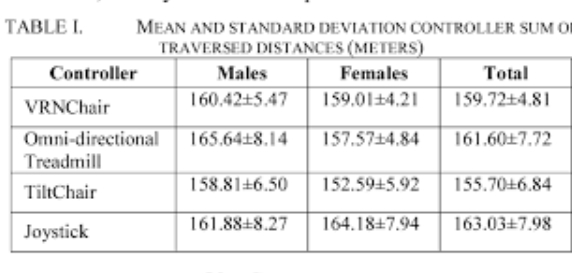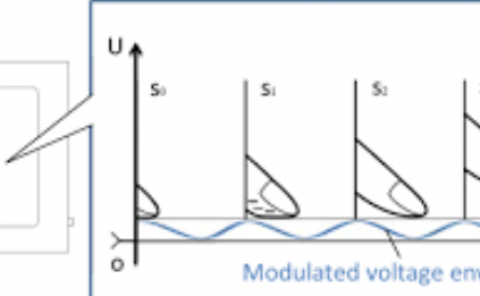Virtual reality body motion induced navigational controllers and their effects on simulator sickness and pathfinding
PubDate: September 2017
Teams: University of Manitoba
Writers: Cassandra N. Aldaba; Paul J. White; Ahmad Byagowi; Zahra Moussavi

Abstract
Virtual reality (VR) navigation is usually constrained by plausible simulator sickness (SS) and intuitive user interaction. The paper reports on the use of four different degrees of body motion induced navigational VR controllers, a TiltChair, omni-directional treadmill, a manual wheelchair joystick (VRNChair), and a joystick in relation to a participant’s SS occurrence and a controller’s intuitive utilization. Twenty young adult participants utilized all controllers to navigate through the same VR task environment in separate sessions. Throughout the sessions, SS occurrence was measured from a severity score by a standard SS questionnaire and from body sway by a center of pressure path length with eyes opened and closed. SS occurrence did not significantly differ among the controllers. However, time spent in VR significantly contributed to SS occurrence; hence, a few breaks to minimize SS should be interjected throughout a VR task. For all task trials, we recorded the participant’s travel trajectories to investigate each controller’s intuitive utilization from a computed traversed distance. Shorter traversed distances indicated that participants intuitively utilized the TiltChair with a slower speed; while longer traversed distances indicated participants struggled to utilize the omni-directional treadmill with a unnaturalistic stimulation of gait. Therefore, VR navigation should use technologies best suited for the intended age group that minimizes SS, and produces intuitive interactions for the participants.



